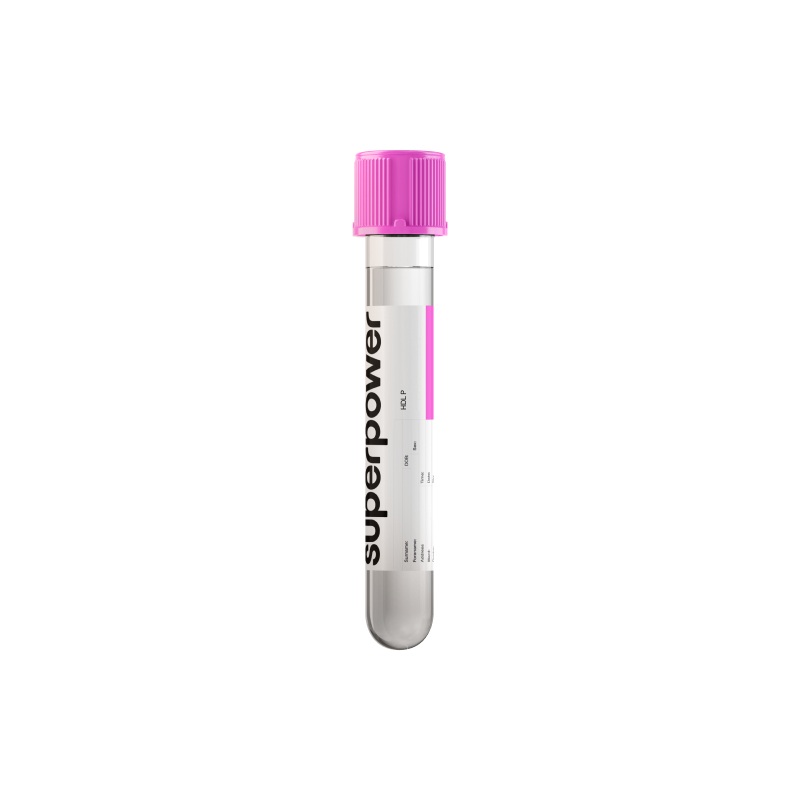HDL-P (high-density lipoprotein particle number) counts the actual vehicles that shuttle cholesterol out of vessel walls and back to the liver, a process called reverse cholesterol transport.
Unlike HDL-C, which only measures how much cholesterol is inside those particles, HDL-P shows how many “workers” are on the job.
Key Benefits
- Gauge heart protection by counting HDL particles, not just cholesterol content.
- Spot residual heart risk when LDL looks okay; low HDL-P signals less protection.
- Flag discordant results when HDL cholesterol is high but particle number stays low.
- Explain links to insulin resistance and metabolic syndrome, which often lower HDL-P.
- Guide lifestyle priorities—exercise, weight loss, and fewer refined carbs can raise HDL-P.
- Track changes alongside ApoB, LDL-P, triglycerides, A1c, and blood pressure over time.
- Clarify its role as a risk marker, not a medication target in guidelines.
What is HDL P?
HDL-P stands for high-density lipoprotein particle concentration—the count of HDL particles circulating in your blood. HDL particles are small, protein-rich carriers assembled mainly in the liver and intestine. They begin as apolipoprotein A‑I (apoA‑I) that picks up phospholipids and cholesterol from cells to form nascent HDL, then mature as they travel through the bloodstream. HDL exists in a spectrum of sizes (small, medium, large); HDL‑P totals the number of these particles regardless of how much cholesterol they carry, which differs from HDL‑C.
What it reflects: the capacity of your HDL “fleet” to move cholesterol and perform protective tasks. Each HDL particle can collect excess cholesterol from tissues and artery walls and return it to the liver for disposal (reverse cholesterol transport). Along the way, HDL particles ferry antioxidant and anti‑inflammatory proteins and lipids, help preserve endothelial function, and participate in immune signaling. Thus, HDL‑P represents the number of active shuttles available to mobilize cholesterol and support vascular homeostasis.
Why is HDL P important?
HDL-P is the count of HDL particles—the body’s fleet of tiny carriers that shuttle excess cholesterol from tissues back to the liver, calm vascular inflammation, and support endothelial repair. It reflects the functional capacity of reverse cholesterol transport across the cardiovascular, immune, and hepatic systems more directly than HDL cholesterol content alone.
Labs report a reference interval that varies by method; within that range, values toward the higher end are generally associated with better vascular health and lower cardiovascular risk. Middle-to-high values usually track with more effective cholesterol efflux and anti-inflammatory signaling.
When the count is low, there are fewer HDL “vehicles” available. Cholesterol efflux from artery walls slows, oxidative and inflammatory stress rise, and the endothelium is more vulnerable. This pattern commonly accompanies insulin resistance, higher triglycerides, and fatty liver biology, and is seen more often in men and after menopause. It is typically silent but tends to coexist with features like central adiposity and rising blood pressure; in youths with obesity, low HDL-P can foreshadow early atherogenesis.
Higher values generally indicate a larger, more active HDL network with better cholesterol retrieval, improved nitric oxide bioavailability, and microvascular resilience. Women often have higher HDL-related measures, and early pregnancy can transiently raise HDL particle activity, though composition shifts later in gestation. Rarely, particles can be plentiful but dysfunctional in certain genetic or inflammatory states.
Big picture: HDL-P complements LDL-related risk (ApoB/LDL particles), triglycerides, and markers of insulin resistance. It integrates liver metabolism, vascular biology, and immune tone, and higher counts within a lab’s range are consistently linked to lower long-term atherosclerotic risk.
What Insights Will I Get?
HDL-P measures the number of high-density lipoprotein particles circulating in your blood. It reflects your capacity for reverse cholesterol transport—moving cholesterol out of vessel walls back to the liver—along with HDL’s roles in antioxidant, anti-inflammatory, endothelial, and immune functions. At a systems level, higher functional HDL particle availability supports cardiovascular resilience, metabolic flexibility, and, via cholesterol trafficking, hormone and cellular membrane balance.
Low values usually reflect too few HDL carriers available to pick up and shuttle cholesterol (reduced reverse cholesterol transport). This is common with insulin resistance, high triglyceride traffic, and hepatic VLDL overproduction, which remodels and clears HDL faster. System effects often include endothelial stress, vascular inflammation, and impaired glucose–lipid crosstalk. Men and postmenopausal women tend to run lower than premenopausal women.
Being in range suggests an adequate pool of HDL particles to maintain cholesterol efflux, antioxidant buffering, and nitric oxide support for vessels. This generally aligns with lower atherogenic risk and steadier metabolic signaling. For most labs, optimal cardiovascular risk profiles tend to track with mid-to-higher portions of the reference range when triglycerides are also controlled.
High values usually reflect robust HDL production and remodeling (apoA-I–driven biogenesis) and greater transport capacity. In most contexts this is favorable. Very high levels can occur with certain genetic variants or atypical particle distributions; clinical meaning then depends on HDL function and the rest of the lipid profile.
Notes: HDL-P is assay-dependent (NMR vs ion mobility), and results are not identical to HDL cholesterol. Nonfasting samples are typically acceptable. Acute illness, inflammation, pregnancy, menopause, thyroid status, and some medications can shift HDL particle number and composition. Comparing HDL-P with apoA-I, triglycerides, and LDL particle measures improves interpretation.



.svg)



.png)
.png)
.png)
.png)








